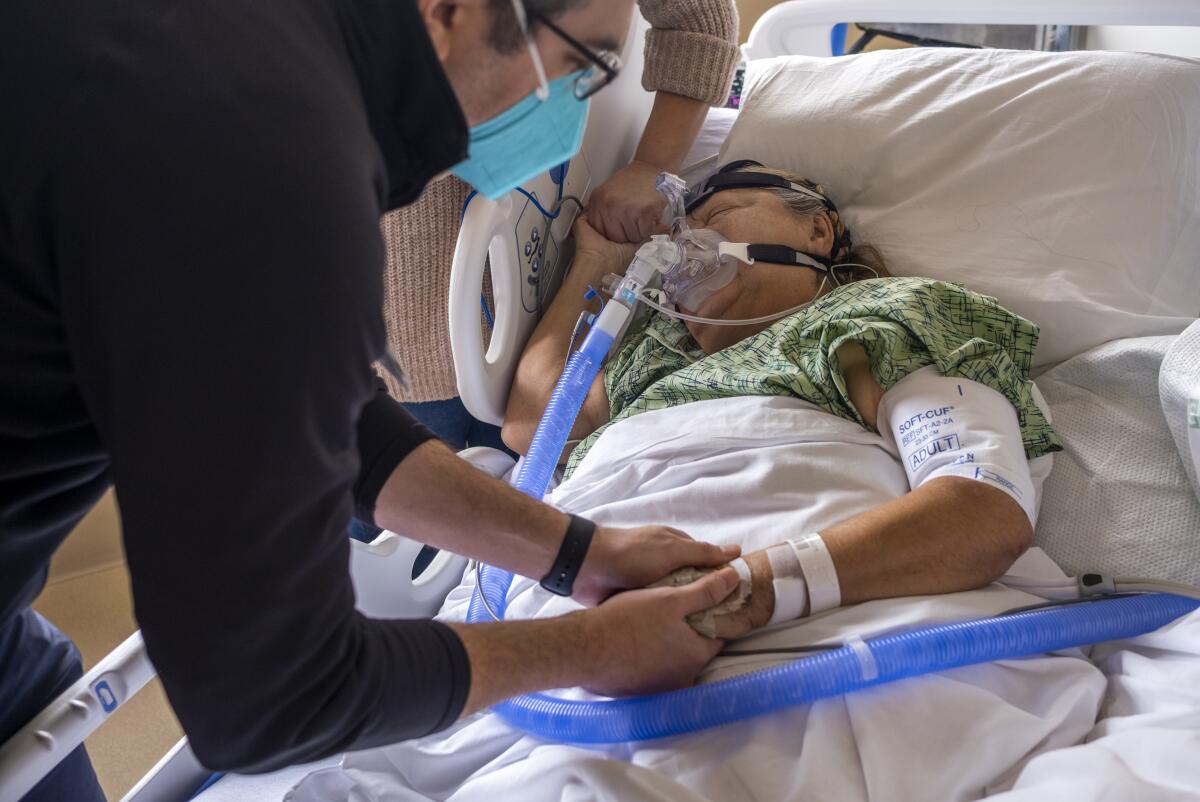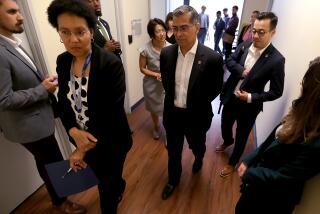Editorial: It’s been two years of COVID. It’s time for a full accounting of our response

- Share via
There’s no great way to mark the exact moment when the pandemic began in the U.S. Was it when the first domestic case of COVID-19 was confirmed? Was it the day when the U.S. Health and Human Services secretary declared SARS-CoV-2 a public health emergency? Or was it when the first death from COVID was reported on U.S. soil?
The best marker may be the day that then-President Trump declared a national emergency — March 13, 2020. It was a Friday, the end of a scary week of news about the alarming spread of the new and deadly coronavirus, and the announcement precipitated a cascade of actions from coast to coast intended to “flatten the curve.” Six days later, Gov. Gavin Newsom issued the nation’s first statewide stay-at-home order.
We wish that the second anniversary of that momentous day in U.S. history was an occasion to celebrate. Though many restrictions have ended, the pandemic is not over. Tens of thousands of new cases are reported every day, and more than 30,000 Americans are currently hospitalized with serious cases of COVID-19. Nearly 1 million people in this country have died from COVID-19, and more than a thousand continue to die each day. Millions of Americans are struggling with long-term effects of infection.
If we’ve learned anything, it’s that the virus has an extraordinary ability to adapt — and is unpredictable.
Still, the latest acute phase of the pandemic seems to be waning. The rate of transmission is dropping and state and federal officials have appropriately turned their attention to planning for the long term. This is essential, because scientists expect COVID-19 to be with us indefinitely.
At this time, as health officials consider whether the disease is moving toward an endemic stage, it’s appropriate to look back at the state and federal response. Not as an exercise in blame — there’s been enough of that over the last two years to fill a book — but a comprehensive, clear-eyed examination similar to that done by the 9/11 commission.
Many elected officials complained during the chaotic months in the first year of the pandemic that there was no playbook for them to follow. They were right. The last viral pandemic of the same scale as COVID-19 happened more than a 100 years earlier, at a time when record keeping and disease reporting were spotty and decades before the creation of the Centers for Disease Control and Prevention. But we can’t bank on being safe from another major global viral outbreak until 2122. We owe it to our future selves and our children to do what we can to help them survive the next pandemic.
The U.S. needs a clear-eyed examination of the ways the pandemic response was bungled. California, which had its own missteps, should do the same.
No one wants to admit mistakes, but a look back will require an honest inventory of the U.S. failures and successes. Happily there’s bipartisan support for such an endeavor as part of the PREVENT Pandemics Act introduced in January by Sens. Patty Murray (D-Wash.) and Richard Burr (R-N.C.). Among other things, the bill would establish a 12-member task force modeled on the 9/11 commission that would examine both the origins of the virus and the federal and state responses.
That’s good, but the task force must do more than assess testing and tracing capabilities, supply chains, travel bans and vaccine development. It must seek to address the most vexing failure of the pandemic: the inequity of the impact. By every measure — economic loss, sickness and death — low-income and communities of color were hit harder by the pandemic than others. While it’s important to shore up the national stockpile of critical medical supplies, we must also examine the holes in the social safety net exposed by COVID-19.
California should undertake a similar self-examination of its pandemic responses, if not with a task force then at least within the halls of power. In many ways, the state did better than others, but state and local governments had their own issues: with technology, with data collection and with communication. We can do better next time, if our leaders are brave enough now to commit to a full accounting of their pandemic performance.
More to Read
A cure for the common opinion
Get thought-provoking perspectives with our weekly newsletter.
You may occasionally receive promotional content from the Los Angeles Times.











